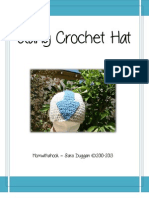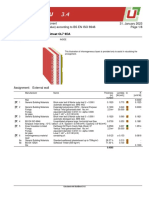100% found this document useful (2 votes)
2K views23 pagesPillow-Rays Pattern 2
The Pillow-Rays pattern by Ty Bailie provides step-by-step instructions for creating crochet pillows in the shapes of various rays, including jumbo and medium manta rays, eagle rays, and southern rays. The pattern includes links to graphs for both right and left-handed crocheters, along with materials needed and an overview of the steps involved. Additionally, it features fun facts about each type of ray and emphasizes the importance of following the graph instructions accurately.
Uploaded by
Maria Del Mar Medina GarcesCopyright
© © All Rights Reserved
We take content rights seriously. If you suspect this is your content, claim it here.
Available Formats
Download as PDF, TXT or read online on Scribd
100% found this document useful (2 votes)
2K views23 pagesPillow-Rays Pattern 2
The Pillow-Rays pattern by Ty Bailie provides step-by-step instructions for creating crochet pillows in the shapes of various rays, including jumbo and medium manta rays, eagle rays, and southern rays. The pattern includes links to graphs for both right and left-handed crocheters, along with materials needed and an overview of the steps involved. Additionally, it features fun facts about each type of ray and emphasizes the importance of following the graph instructions accurately.
Uploaded by
Maria Del Mar Medina GarcesCopyright
© © All Rights Reserved
We take content rights seriously. If you suspect this is your content, claim it here.
Available Formats
Download as PDF, TXT or read online on Scribd
/ 23

























































































